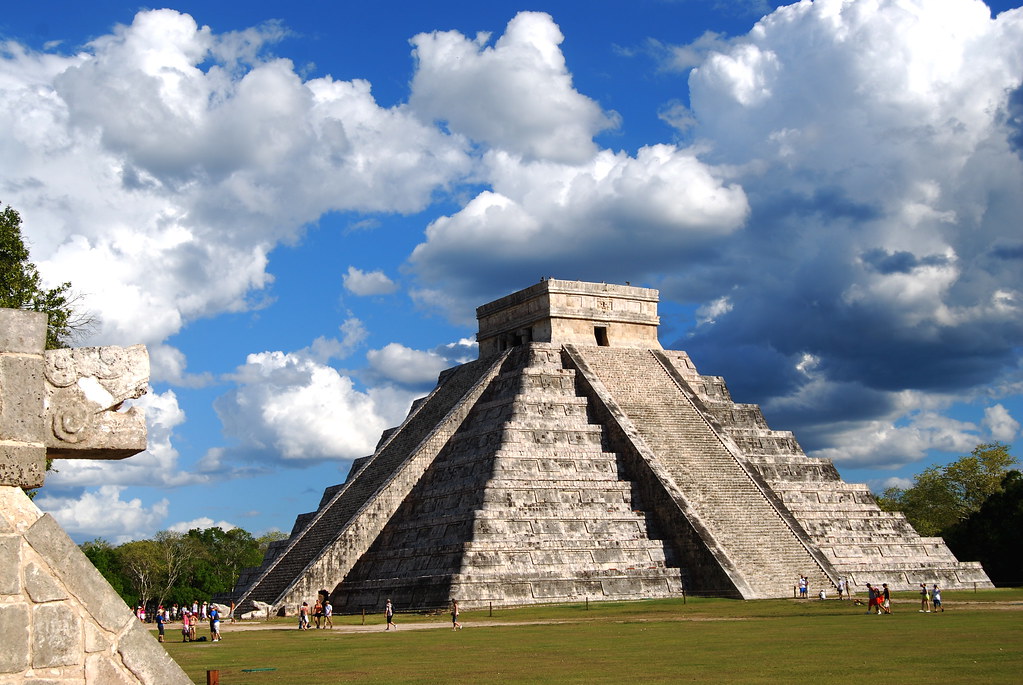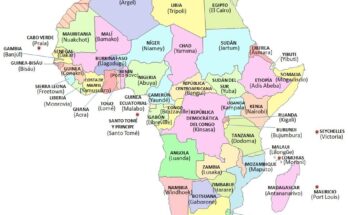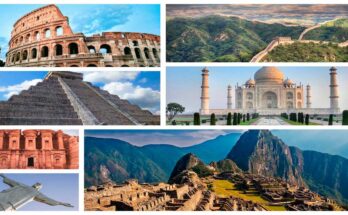In order to know what the pyramid of Chichen Itza was built for, it is important to first recognize its origin; the importance it had in the past and why it is still important today for the population.
This is why we are going to describe first: where Chichén Itzá is located, its origin, its importance, how Chichén Itzá was built and what it was initially built for.
Table of Contents

Location of Chichén Itzá
Chichén Itzá is located in eastern Yucatán, between the cities of Mérida and Cancún. The entire core of Chichén Itzá covers an area of approximately 5 square kilometers.
Origin of Chichén Itzá
Although archaeologists are not entirely sure exactly when the construction of Chichén Itzá began, some historical records suggest that the first phases of the city’s development were around 600 or 750 AD.
It was in the IX century A.D. that the Itzaes were able to establish themselves in the region, and it is believed that they were Mayan, Putun or Chontal; they created a large domain with a totally unified culture in the center of Chichen Itza. By the end of the 10th century, the city was invaded by the Toltecs, the predominant warrior tribe.
As a consequence of this last invasion, a series of new elements were added to the culture; the most outstanding was the representation of the serpent-god Kukulkan. In 1250 A.D., for reasons that have not yet been determined, Chichén Itzá was totally abandoned.
Importance of Chichén Itzá
Since Chichén Itzá was invaded by the Toltecs and both cultures began to mix, it progressively gained relevance until it became one of the most important cities in the entire Yucatán peninsula.
The Mayan city of Chichen Itza was declared a World Heritage Site by UNESCO in 1988; in 2007, it was named one of the 7 wonders of the modern world, standing out as the cultural and political center of the ancient Mayan civilization.
Chichén Itzá remains important to this day for being, at the time, one of the largest settlements in the north-central Yucatán peninsula; and in its most relevant era, it was even the most powerful city in the Yucatán peninsula.
How the pyramid of Chichén Itzá was created
Evidently, the design of Chichén Itzá has a geometric pyramidal shape; it has 9 levels, 4 main fronts and each one has its central stairway. Each stairway has 91 steps and one more that allows access to a small temple on the upper platform; in the central stairway, snake heads can be observed.
In the last times, it has been discovered that the main pyramid was built on two structures; a small one that was the initial one and on this one another one was built. The first one was built over a subway cenote, this shows the importance of water bodies for the Mayan culture.
What was the pyramid of Chichen Itza used for?
So what was the pyramid of Chichén Itzá built for? Chichén Itzá served as the home of the Maya from all the peninsular areas of Yucatán; some historians believe that Chichén Itzá’s fame is due to its proximity to the Xtoloc cenote, which is an important subway source of fresh water.
This main construction was used to worship Kulkulcán, who was a Mayan god and whose name means “feathered serpent”; for this reason snake heads can be seen on the main staircase.
It is believed that the reason for the 91 steps, if added to the entrance of the upper temple, would be 365, representing the 365 days of the year. It is for this reason that some experts consider that this pyramid was created in order to worship the sun.
It has been discovered that the pyramid allowed to see the phenomena of light and shadow in the equinoxes and solstices of every year. This occurs between the 20th to 23rd of March and September for the equinoxes; and between the 20th to 23rd of June and December for the solstices.
At the equinoxes, a shadow is cast that is divided into 13 triangular-shaped spaces of light; they belong to one of the measures of the harmonic times of the sun in the calendar of the Mayan culture, the same 13 spaces form the figure of the feathered serpent in the pyramid of Chichén Itzá.
What is inside Chichen Itza?
Now that you understand what the pyramid of Chichén Itzá was built for, it is also important to know that, without a doubt, it is home to other architectural and natural wonders. Such as the Temple of the Warriors, the Sacred Cenote, the Great Ball Court.
It has many zones or complexes, which demonstrate different architectural styles and periods of development. Chichen Itza is also home to several cenotes, which are nothing more than natural subway water wells; such as the Xtoloc Cenote or the great Sacred Cenote.
Due to the varied construction of monuments and for being one of the largest and best preserved archaeological sites in the world; today it is still one of the most visited places in the world. In addition, Chichen Itza, in its heyday was the most populated city in the Yucatan Peninsula.



